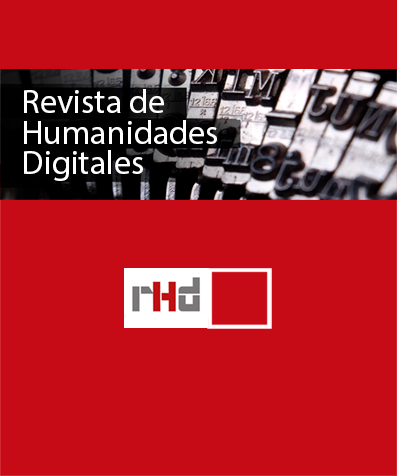Mucho más que mapas. El uso de los GIS en el estudio económico-territorial del condado de Barcelona y en el análisis del paisaje espiritual durante la Edad Media
DOI:
https://doi.org/10.5944/rhd.vol.3.2019.23510Keywords:
Humanidades Digitales, GIS, Deep mapping, Edad Media, Paisaje medievalAbstract
Los GIS constituyen una herramienta de gran interés para la representación y análisis de los datos históricos. Habiendo trabajado con ellos durante más de quince años, el presente artículo pretende un doble objetivo. Por un lado, presentar algunas de las investigaciones realizadas con GIS sobre el territorio, la economía y el paisaje espiritual de época medieval. Y por el otro, reflexionar sobre la utilidad de los GIS en la investigación histórica: sus oportunidades, éxitos y limitaciones.
La experiencia de trabajo con GIS demuestra que son una plataforma útil para el análisis histórico, aunque su potencial es mucho mayor del que somos capaces de aprovechar quienes de manera autodidacta los utilizamos en nuestra investigación. Tal obstáculo solo puede superarse a partir de la creación de equipos interdisciplinarios capaces de afrontar los principales retos de futuro: el análisis 3D y el uso de algoritmos complejos.
Downloads
Downloads
Published
How to Cite
Issue
Section
License
Copyright (c) 2021 Maria Soler Sala

This work is licensed under a Creative Commons Attribution-NonCommercial 4.0 International License.
RHD provides immediate free access to its content under the principle that making research available to the public for free favors greater global knowledge sharing. RHD does not charge fees to authors for the submission or processing of articles
Users can read, download, distribute, print, search, partially reproduce or link to the texts without requesting prior permission from the editor or the author.
RHD does not charge fees to authors for the processing of works, nor fees for the publication of their articles.
RHD is free from the moment of the publication of each issue and its contents are distributed with Creative Commons license No Commercial 4.0 International , which allows the user free and open access, criteria that meet the definition of open access of the Budapest Declaration in favor of open access. This means that they can be copied, used, disseminated, transmitted and exhibited publicly, provided that the authorship and the original source of their publication are cited (magazine, editorial and URL of the work, not used for commercial purposes, mention the existence and specifications of this license of use.
The authors retain the copyright and guarantee the journal the right to be the first publication of the work. The authors are free to distribute their work published in the magazine in other media, such as an institutional repository or inclusion in a book.



